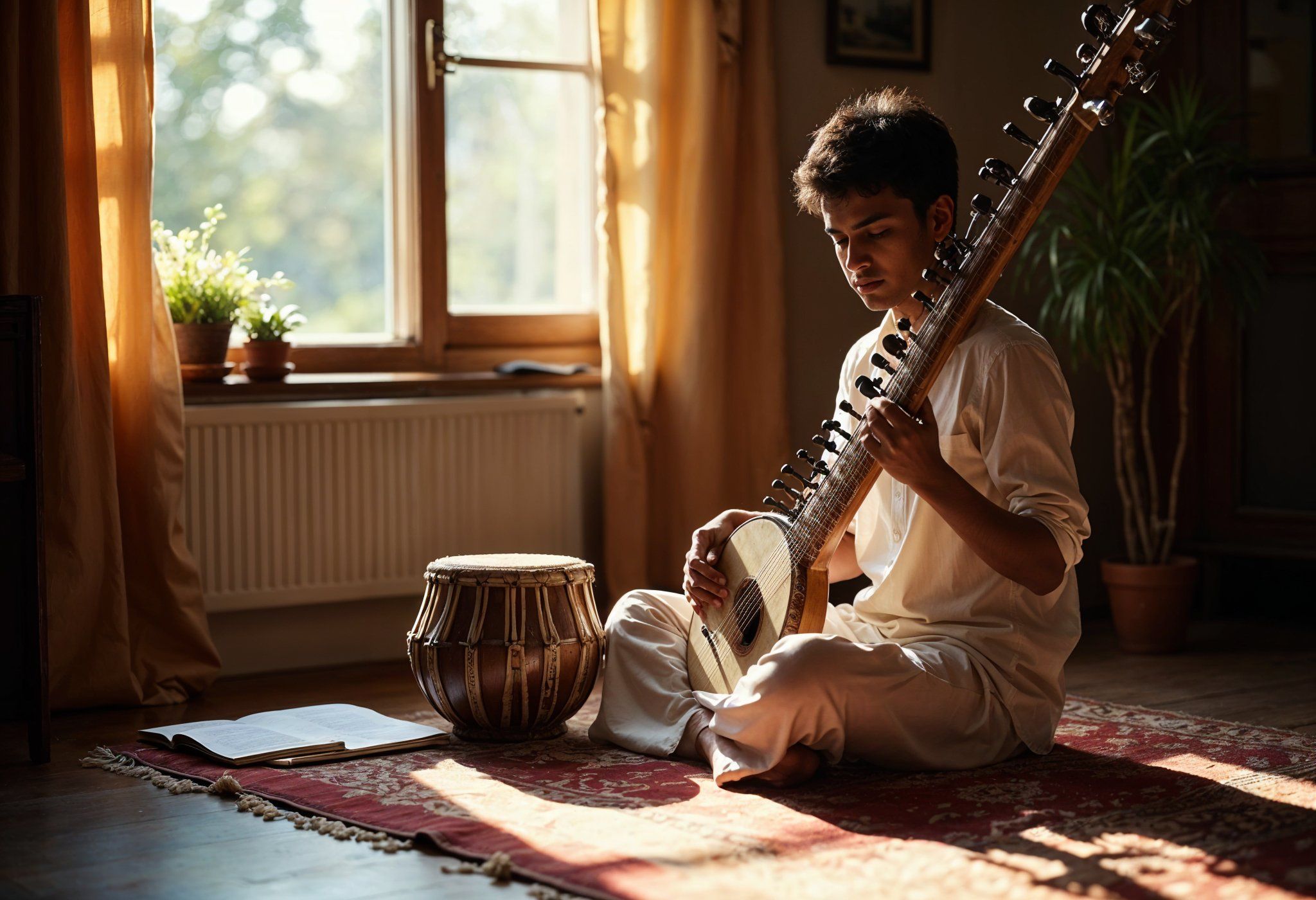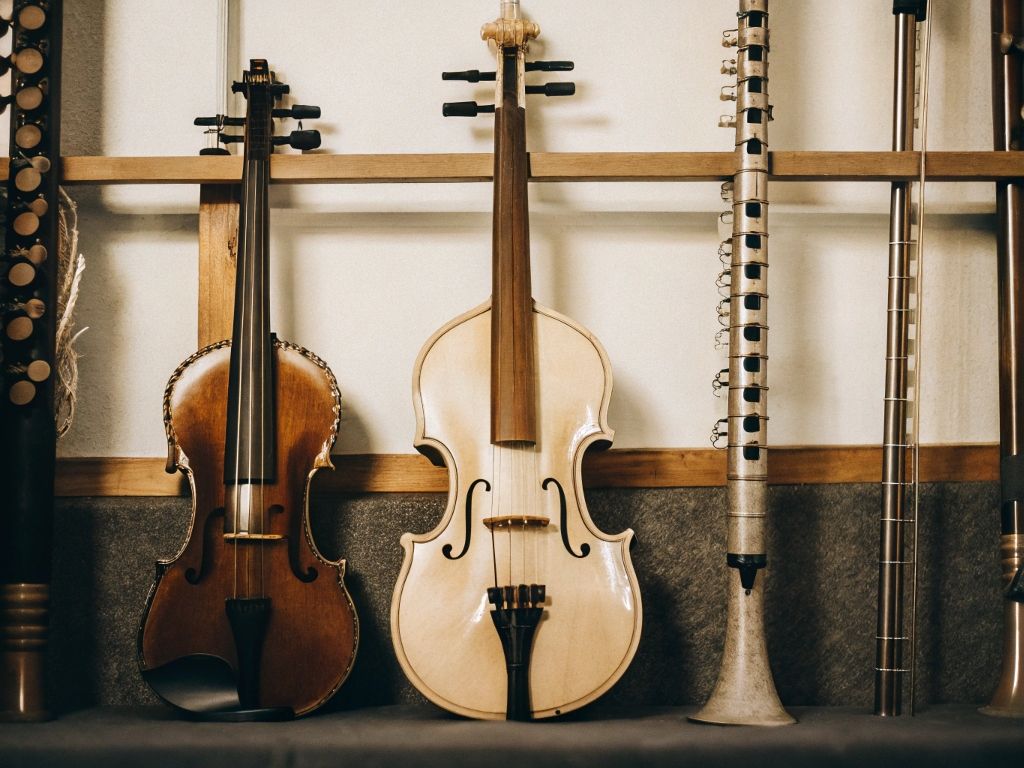
Art Gharana — 5 Mins read
A Beginner’s Guide to Understanding Ragas – Indian Classical Music
Vocal

Did the complex beats and heartfelt tunes of South Indian music ever captivate your attention? The captivating world of Carnatic music likely caught your attention if you've explored the cultural and spiritual depths of southern Indian music. What defines Carnatic music, and why does it stand as a remarkable element within India’s musical legacy?
This beginner’s guide to Carnatic classical music will teach us about its fundamental elements by following its historical roots and exploring its special features. This guide helps you understand everything about the rhythmic patterns in Carnatic talas while exploring the emotional expression found in ragam of Carnatic music along with the difference between Carnatic music and Hindustani music.
After completing this journey, you will develop a stronger appreciation for the craftsmanship of this ancient musical form, along with potential inspiration to explore Indian Carnatic music further. Are you prepared to immerse yourself in Carnatic music's rich and melodic world? Let’s get started!
Anyone who has experienced the complex tunes and rhythmic patterns of Carnatic music may have pondered over its distinct characteristics. This classical music tradition, deeply embedded in South Indian music, is more than just an art form; it’s a spiritual and cultural expression that has been passed down for centuries. But where did it all begin?
Carnatic classical music originated from ancient Indian scriptures, including the Vedas. As time passed, Carnatic music transformed into an organised system, which became central to the royal courts and temples of southern India. Purandara Dasa, who holds the title of "father of Carnatic music" established the foundation for this musical tradition. His musical compositions established the foundational practices many musicians adhere to in modern times.
Unlike Hindustani music, which developed in the northern regions and absorbed Persian and Mughal influences, Carnatic music of India remained deeply connected to its devotional roots. This distinction is what gives Carnatic music its signature style—rich in ragam (melody) and talam (rhythm).
Curious about the Hindustani music genre? Listen to this insightful podcast on Hindustani classical music.
The complex structure and depth of improvisation distinguish Carnatic music from other forms. Here’s what makes it stand out:
The exploration of Indian Carnatic music reveals its enchanting patterns, which continue to stand the test of time. The rich depth and exquisite beauty of Indian Carnatic music captivates both musicians and listeners alike.
Anyone who has ever listened to Carnatic classical music will have observed its complex patterns and captivating rhythm. What elements contribute to its distinct structure in Carnatic music? The foundation of Carnatic music lies in its structured system of melody and rhythm together with lyrical compositions, which distinguish it from other music forms.
Carnatic music of India maintains a strict structure, while other musical styles support spontaneous improvisation. Every composition is crafted with a balance of three essential elements:
The foundation of these three pillars enables musicians to dive deep into their art while following an organised structure.
If you're interested in learning Carnatic vocal techniques, check out these online Carnatic vocal classes designed for beginners and advanced learners.
The essence of Carnatic music performance depends on the combination of ragam and talam.
The dynamic energy and expressive depth of Carnatic classical music depend on mastering the relationship between melody and rhythm.

Vocal performance dominates Karnatic music, but instrumental sections provide essential support. Some of the key Carnatic music instruments include:
Want to master rhythm? Check out these online tabla classes to develop a deeper sense of beat and timing, a skill crucial for understanding Indian Carnatic music.
The foundation of Carnatic classical music represents an ideal balance between strict technique and inventive expression through both its melodic details and rhythmic superiority. Listeners as well as future musicians who learn these elements can grow closer to this classic art form.
You've probably wanted to learn Carnatic music but were unsure about how to begin. Learning Carnatic singing demands dedication along with practice while also understanding its foundational principles, just like any traditional art form. Aspiring Carnatic singers or those who are just exploring the learning process should start by knowing their first steps to enjoy a smoother musical journey.
Understanding sruti (pitch), swaras (notes), and gamakas (ornamentations) forms the core foundation of Carnatic vocal music. Here’s what beginners typically focus on:
Structured lessons help students build a solid foundation, which enables them to move towards performing more complex compositions.
Interested in learning from professionals? Explore these online Carnatic vocal classes designed for students of all levels.

A Carnatic vocalist serves as a storyteller who infuses every note with emotion and devotion. Vocalists must:
Aspiring vocalists look up to legendary Carnatic music singers, including M. S. Subbulakshmi, Balamuralikrishna, and Aruna Sairam, because they set the highest standards in their field.
Learning Carnatic classical music heavily involves studying its extensive collection of devotional compositions. Some iconic Carnatic music songs include:
These eternal compositions maintain their power to motivate both performers and audiences.
Want to explore another classical tradition? Check out these online Hindustani vocal classes to understand the differences and similarities between Carnatic and Hindustani music.
If you want to dive into the world of Indian Carnatic music, here are some helpfull tips to help you get started:
You will master Carnatic singing by maintaining patience and passion, whether you study through online courses or in-person lessons.
Did you know that Carnatic music, though deeply rooted in South Indian music traditions, has gained world-wide recognition? The classical music form attracts audiences internationally through its complex rhythms and melodies as well as its spiritual nature. What enabled Carnatic music to achieve global reach, and in what locations does its impact exist today?
From its early history until today, Carnatic classical music performances took place mainly in southern Indian temples and royal courts. However, in the modern era, its reach has expanded significantly:
Major cities such as Chennai, Bengaluru, and Hyderabad stage famous events, including the Margazhi Music Season, which attract audiences from around the world.
Universities in India and around the world now teach Carnatic music which preserves and promotes this ancient art form.
A growing number of Indian communities worldwide have established organizations that teach and showcase Indian Carnatic music.
Through digital learning platforms, students from various continents learn Carnatic singing without being limited by their location.
Curious about how classical music education is evolving? Learn about Art Gharana’s mission in preserving traditional music and making it accessible globally.
The recent merging of Carnatic music with Western musical forms including jazz, rock and electronic music stands out as one of the most stimulating innovations. Some ways this fusion is taking shape include:
Through fusion music the Carnatic tradition reaches new listeners while continuing to develop and transform.

Digital platforms have made it simpler than before to learn Carnatic music. Whether you're a beginner or an advanced student, online courses provide:
Carnatic classical music evolves from its holy origins in southern India to its worldwide reach by consistently providing new inspiration and innovative expressions. Regardless of the setting, whether it is a temple performance or global digital broadcasts, the enduring beauty of Carnatic classical music reaches beyond geographical limits.